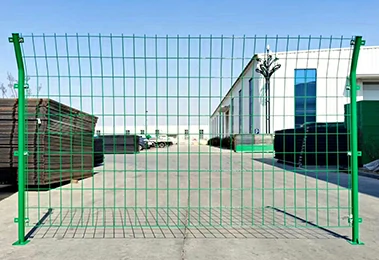 TEL:
+86-13102802206
TEL:
+86-13102802206
 Email:
fencenetting@china.com
Email:
fencenetting@china.com
 Language
Language
 TEL:
+86-13102802206
TEL:
+86-13102802206
 Email:
fencenetting@china.com
Email:
fencenetting@china.com
 Language
Language


Understanding Gabion Lacing Wire Its Importance and Applications
Gabion structures have become increasingly popular in various construction and landscaping projects due to their versatility, durability, and aesthetic appeal. These wire mesh cages, typically filled with stones, rocks, or other materials, serve numerous purposes, including erosion control, slope stabilization, and decorative features in gardens and public spaces. A crucial component that ensures the functionality and integrity of these gabion systems is the gabion lacing wire.
Gabion lacing wire is a specialized wire used to securely fasten the edges of gabion baskets. It plays a fundamental role in maintaining the structural integrity of the cages, ensuring that the stones or materials inside remain in place and do not shift or spill out over time. The lacing wire is typically made from high-quality steel, often galvanized to resist corrosion and extend its lifespan, which is critical in environments exposed to moisture and varying weather conditions.
Key Characteristics of Gabion Lacing Wire
One of the most important characteristics of gabion lacing wire is its tensile strength. This strength ensures that the wire can withstand the weight of the stones, as well as any forces exerted by water or soil erosion. Lacing wire typically comes in various gauges, allowing builders to choose the appropriate thickness based on the specific requirements of their gabion project. A thicker gauge may be necessary for larger structures or those in more challenging environments.
Additionally, gabion lacing wire is designed for flexibility, allowing for easy manipulation and securing of the gabion baskets. This flexibility is particularly beneficial when working with irregularly shaped stones, as it enables the builder to adjust the wire for a snug fit. The wire can be twisted or tied easily, making it a convenient option for both professional builders and DIY enthusiasts.

Applications of Gabion Lacing Wire
The applications of gabion lacing wire span across various fields civil engineering, landscaping, and environmental management. In civil engineering, gabion structures reinforced with lacing wire are commonly used for retaining walls, riverbank stabilization, and flood control systems. By providing support and preventing erosion, these structures contribute to the longevity of surrounding infrastructure.
In landscaping, gabions have found a place in garden design, serving as decorative features, raised beds, or boundary walls. The use of lacing wire ensures that these gabion installations remain intact and maintain their aesthetic appeal over time. Additionally, the porous nature of gabion structures allows for improved drainage, making them suitable for planting or landscaping projects.
Conclusion
Gabion lacing wire may seem like a small component in the larger context of gabion structures, but its significance cannot be overstated. It is an essential element that ensures the durability and stability of these versatile cages. With its robust properties and ease of use, lacing wire continues to play a pivotal role in the successful implementation of gabion systems in various applications. As the trend towards sustainable and effective engineering solutions grows, understanding and utilizing products like gabion lacing wire will remain vital for successful project outcomes. Whether you're an engineer, landscape designer, or a DIY enthusiast, knowing how to effectively use gabion lacing wire is an invaluable skill in modern construction and landscaping practices.